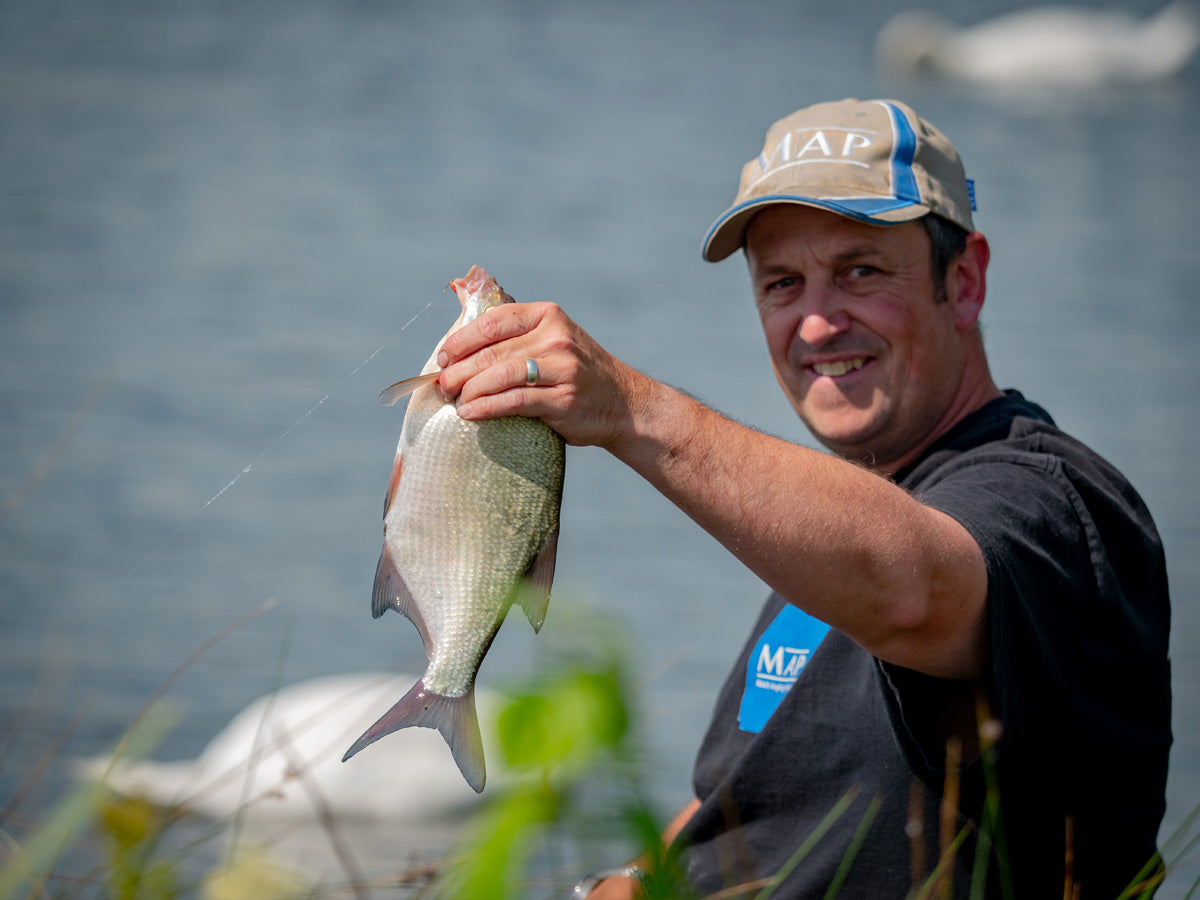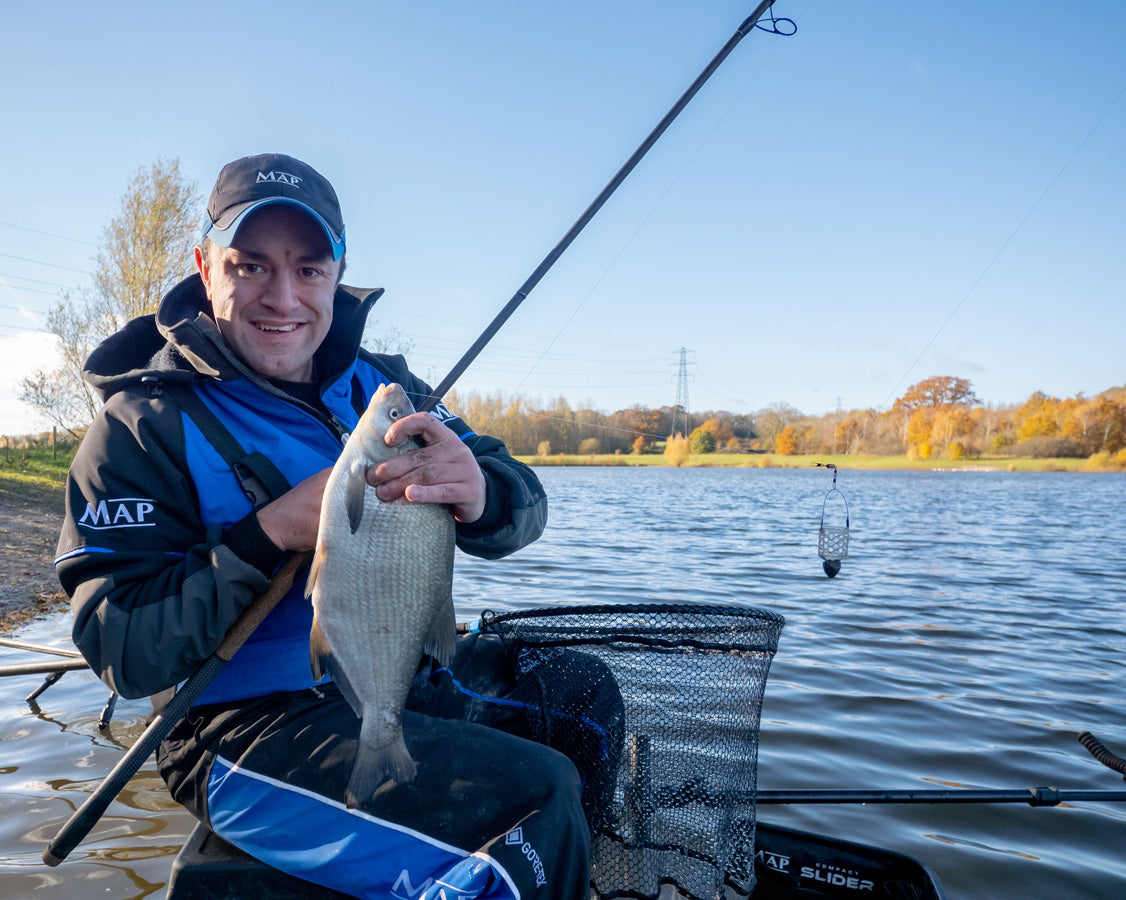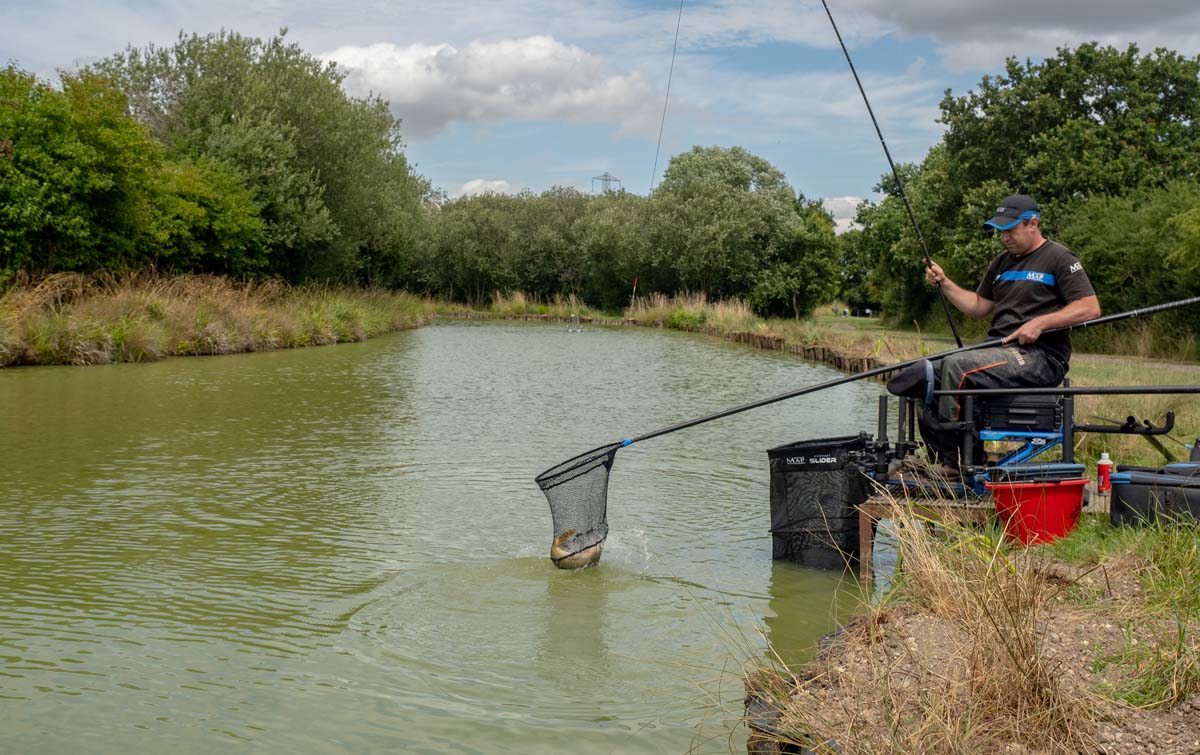Keep It Simple For Big Water Success!
It can be a daunting prospect when heading to a large open water venue, and there can also be some new hurdles to overcome too! But according to World Feeder Champion Michael Buchwalder, you shouldn’t worry at all!
It can be a daunting prospect when heading to a large open water venue, and there can also be some new hurdles to overcome too! But according to World Feeder Champion Michael Buchwalder, you shouldn’t worry at all!

We caught up with Michael on the banks of Furzton Lake in Milton Keynes, a large lake surrounded by the hustle and bustle of the city, to see how he goes about putting together some great bags of silver fish on the feeder.
The Venue
Furzton is a nostalgic venue for me as it’s where I started my feeder fishing back in the 90’s, and having just returned from the World Feeder Championships in Serbia, a chilled-out day on the bank with no pressure is just what I needed!

The venue has changed a lot over the years, and 15-20 years ago you could catch 20lb of roach on the pole and there weren’t many skimmers to be caught, but ten years ago there was a huge bream explosion at the venue and weights of 60-90lb were being caught regularly. Back then, the water was very coloured but it's much clearer now.

Now the venue is absolutely gin clear, and lots of Canadian pond weed now grows around the lake which adds another dimension you need to factor into your fishing on a venue like this.
The fishing is still excellent, with lots of roach, skimmers, perch and bream to be caught on the feeder, and I’m looking forward to seeing what the day holds in store.
A Comfortable Distance
When faced with a large expanse of water, it’s easy to get drawn into blasting a feeder as far as you can, but more often than not the best distance is decided by other factors – the first is the depth.
If you’re fishing for roach and perch something from 5-8ft deep is ideal, but if you’re fishing for bigger fish like bream and skimmers, slightly deeper water is usually best.

Today I’m faced with a pretty uniform 8ft deep everywhere so I’ve had a cast around with a lead to see where the weed is in my peg and I’ve found a nice clear area at 50 metres.
This is wrapped up using distance sticks so I can always return to my baited area if the worst did happen. The important thing about 50 metres range is that I can hit this no matter what the weather does.
On big waters the conditions can have a huge impact on what distances you can fish and unless you’re using dedicated distance tackle, you can be caught out if the weather changes and hitting the spot becomes difficult.

I always consider this, and if there’s no major changes in depth around my peg, I don’t have to fish any further and opt for the comfortable range, but on the other hand, I always have the option of going further too, if the fishing proves to be harder.
The Set Up
Feeder fishing doesn’t have to be complicated and for my session at Furzton I’ve got a basic set up that you can take anywhere!
The rod is a Parabolix Ultra II 12ft Feeder fitted with a 1oz tip, perfect for the conditions we have today with a gentle wind and a slight tow on the water.

I always carry a big selection of quiver tips in a Q-Tip Protection Case and by just simply undoing my leader and changing the tip over I can use the right quiver tip all day without breaking down my rig.
This is teamed up with a Parabolix 3500x reel loaded with 0.10 braid and a 6 metre 10lb shock leader, as I mentioned before there is a lot of weed in Furzton and a heavy mono leader helps massively in getting the fish out of the weed.

Rig wise, I’ve simply tied a 45g window feeder onto a 3-inch loop in the mainline and the 50cm hook length is lassoed to the main line which buts up against the loop knot.
The hook length is tied to 0.13mm Optimum Power down to a size 14 B560 hook, which is great for all silver fish feeder fishing.

Bait Choices
Word from local anglers was that Furzton was fishing quite hard in recent weeks but with many targeting bream on bigger baits like pellets and boilies on method feeders I felt they were missing out!
With this in mind I’ve gone down the traditional natural baits route, furnishing my side tray with some worms, maggots and casters so I can quite literally fish for anything that swims.

Groundbait wise I’ve gone for a mix of Sensas Bream & Skimmers Feeder Dark and Gros Gardons, this gives me the perfect mix – dark in colour for the clear water, but also with an element of fishmeal too so that I’m giving myself the best chance of bites from roach and perch but also those better bream and skimmers too.

Weedy Waters!
Fishing venues that have lots of weed can be a challenge and it’s a regular problem faced on natural waters, like I said here at Furzton the water is very clear and clear water is perfect for prolific weed growth.
Between where I’m fishing and where I’m sat is a large bed of Canadian pond weed, so it’s inevitable that when I’m reeling fish back, some are going to get snagged.
Lots of angler’s panic when they have a fish stuck in weed but it’s possible to get the majority of them out with the right technique!

Something I learned fishing on the River Erne in Ireland was that the anglers who yanked the fish from the weed lost fish and tackle.
I’ve always found that the best way to get the fish out is to keep a very tight line and a big bend in the rod applying a constant pressure and pull without the yanking action, which will eventually break your line.
By doing this, you’ll notice the rod tip inching back gradually patience is the key here as the heavy shock leader and braid gradually cuts through the weed, eventually releasing the feeder and the fish which you’ll be putting in your net and not tackling up again which in a match situation is invaluable.

The Session
To kick things off I attached a large bait up feeder to my clip swivel and deposited ten feeders of neat groundbait onto my 50-metre line.
I didn’t include any particles to this as I’d be fishing with a window feeder which mainly delivers particle baits and a small amount of groundbait each cast.

Filling the window with casters and capping it off with groundbait, I started with a double caster hook bait. On the very first cast I had a positive bite and a quality roach was netted, just what I hoped would happen!

I carried on feeding casters and fishing either casters or maggots on the hook, and would do so until bites slowed up.
After catching a great run of roach, perch and a couple of hybrids, bites dried up so I decided to introduce some chopped worm into the feeder to add some attraction into the peg.
You have to be careful with worms though as you can end up with a peg full of small perch on this venue but with no bites, you have to do something!

As is often the case, the worms sparked an immediate revival of the swim and after a couple more roach, I couldn’t resist putting a worm section on to see if there were a few better fish in the swim too.

After a couple of minutes, the tip pulled round slowly and a much bigger fish was hooked, the tell-tale nod on the end of the line suggested this was a proper bream!
After a little bit of patience getting the fish through the thick beds of weed a 5lb bream was laying in the landing net!

A few skimmers and hybrids followed, and every time the swim went dead, I introduced what I call a ‘worm bomb’ this is basically loading the window feeder full of worms and capping it with groundbait to get maximum impact, this saw me catching plenty of fish until the end of the session.

A quick look in the net for a catch shot revealed a wonderful 20lb mixed bag of fish, on a venue many say was fishing rock hard, but with the right approach and keeping it simple on these big venues, you can always put some bites together.




